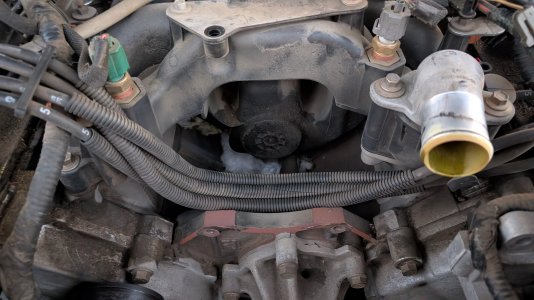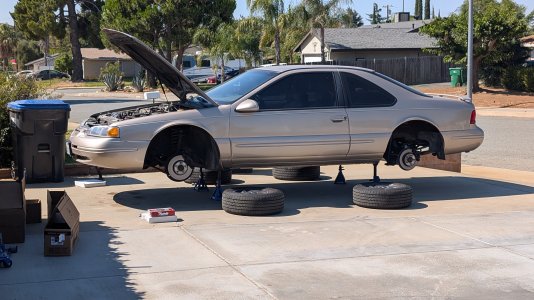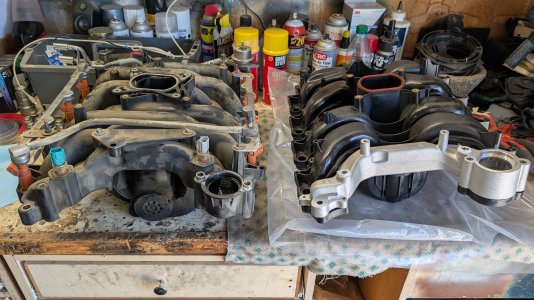1997ThunderbirdLXV6
Seasoned PostWhore
Admin, could you move posts #356-#360 into my vacuum leak thread? I don't want to be a distraction in this thread; I only posted here because vacuum was part of the OP's screen shots. Thanks!
Torque will read trans temp, there are 2 PIDs available, only a few degrees difference. You do need to go into settings and select FORD PIDs.
Admin, could you move posts #356-#360 into my vacuum leak thread? I don't want to be a distraction in this thread; I only posted here because vacuum was part of the OP's screen shots. Thanks!







I can't say anything really about the bite, she seems a little slow on that part there. I'm not sure if it's always been like that and I haven't noticed because of the "gritty" feeling or if it's a new development.
New rotors and pads aren't glazed, so this is expected; take it easy on the brakes or go out and give them a conditioning run to avoid uneven glazing and pulsing brakes later.
With fresh rotors and pads, it's important to condition or "bed" the brakes to season the new parts to provide maximum braking effort and resistance to warping. If fresh rotors aren't properly seasoned, the virgin brakes can overheat and cause an uneven transfer of pad material to the surface of the rotor. This leads to pulsating under braking, uneven rotor heating and more severe warping (all exacerbated by unevenly and/or overtorqued lug nuts!).
You may notice that there's a bluish tint to used rotors - this is indicative that pad material has been glazed onto (embedded into the surface...
- theterminator93
- Replies: 0
- Forum: Brakes
You can replace just the ball joints in the lower arms in you so desired.
If the lca's are toast, do them All. uca,lca,endlinks, strut rod bushings, tie rod ends.
Order the energy suspension sway bar bushings, diff mounts,and look at the rear endlinks.
I do this every 120kmi or so.
I've got a set of refurbished front LCAs, of you need good ones. I can't remember if they are Ford or aftermarket, but they are good. They came from Ian's Cougar(BMW Ian,)







FWIW, I notice that my temps go down when I'm cruising at slower speeds. What's up with that? Like, how could less airflow make the engine run cooler? Is because of less strain on the engine (RPMs)?
Still no transmission temperature reading? Because that's been an unknown so far, and transmission temperature goes up with cruising speed based on my observations.
Aren't your revs a bit high? I wonder if your torque converter is slipping. Can anyone else chime in? I don't usually cruise at that speed, but from memory the revs look about 100 rpm too high (?).
View attachment 14040
Those lil' schitz...The rodent nest was decently sized, but now it's all picked up.
It's not a lot, but it's still a lot, lol. The most tedious part has been the IM.
View attachment 13748
I may be totally off target here, but based on my calculations, at 76 mph, your revs should be 2,196 rpm, assuming a 3.27 final drive ratio and 0.7 top gear, as well as 225-60-16 tires.
Based on the same calculations, at 60 mph, your revs should be 1,734 rpm.
Your revs are at 2,309 at 76 mph. I think there's something going on there. That would also explain some less than expected fuel economy. Do you remember when that screen shot was taken? Uphill/downhill? Cruise control on/off?
Again, I may be totally wrong. Wait for others to chime in in the morning.
